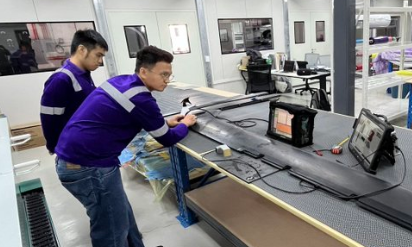MIT engineers have developed an innovative implantable device called ImPULS, which utilizes ultrasound for deep brain stimulation, potentially providing a safer and more effective treatment for neurological disorders like Parkinson’s disease. This new technology, described in a study published in the journal Nature Communications, aims to replace traditional electrode-based stimulation methods, which can lead to tissue damage and are less efficient over time due to electrode corrosion and scar tissue formation.
Exciting advancements in brain mapping! 🧠🔬 New neuroimaging techniques reveal unprecedented detail in brain structure and function, aiding in diagnosing and treating neurological disorders. MIT’s innovative methods combine expansion and lattice light-sheet microscopy for… pic.twitter.com/JLbZT1tA90
— Mohsen Suri (@SuriMohsen) June 16, 2024
The ImPULS device is remarkably thin, akin to a strand of hair, and uses ultrasound waves instead of electrical pulses to stimulate brain neurons. This method is designed to minimize tissue damage and provide precise stimulation to targeted brain areas. The device’s development was led by Canan Dagdeviren, an associate professor at the MIT Media Lab, along with a team of researchers from institutions including Boston University and Caltech.
One of the standout features of the ImPULS device is its ability to reach deep brain regions that are typically challenging to access with non-invasive techniques. The device’s ultrathin fiber, equipped with a piezoelectric ultrasound transducer, is inserted directly into the brain, allowing for localized stimulation. This direct approach helps overcome the limitations posed by the skull, which can distort ultrasound waves when external devices are used.
Researchers developed and tested a tiny, implantable #neurostimulation device that uses ultrasound to modify the activity of neurons deep in the brain.
.
Read the full study: https://t.co/wQxFpQfjbX
.@BU_Tweets @MIT pic.twitter.com/D3BGNpyinn— BBRFoundation (@BBRFoundation) June 21, 2024
The potential applications of the ImPULS device extend beyond treatment. It also offers valuable opportunities for research into brain function. The technology’s precision and minimal invasiveness make it an ideal tool for scientists studying the neural mechanisms underlying various cognitive and neurological conditions.
Future enhancements for the ImPULS device include the integration of a microfluidic channel, which would enable the simultaneous delivery of drugs and ultrasound, further expanding its therapeutic potential. The researchers are also exploring the scalability of the technology, which could lead to customized devices tailored to specific brain regions or patient needs.
#MIT researchers have developed an alternative to implanted electrodes that uses ultrasound to perform deep brain stimulation. This can trigger neurons to release dopamine in a part of the brain that is often targeted in patients with Parkinson’s disease.https://t.co/8Jiurg7R78 pic.twitter.com/kwCeBcoel3
— Saravanan K (@Saravanan101404) June 20, 2024
The ImPULS project reflects MIT’s ongoing commitment to pioneering new methods and tools for neuroscience research and therapy, with the potential to significantly advance our understanding and treatment of the brain.
Key Points:
i. MIT engineers have created an implantable device, ImPULS, using ultrasound for deep brain stimulation, potentially replacing traditional electrodes.
ii. ImPULS is designed to be minimally invasive and more effective, capable of stimulating deep brain areas without significant tissue damage.
iii. The device utilizes a piezoelectric transducer to deliver localized ultrasound waves directly to brain neurons, bypassing the distortive effects of the skull.
iv. This technology not only promises enhanced treatment options for disorders like Parkinson’s but also serves as a powerful research tool for studying brain function.
v. Future plans for ImPULS include the development of a dual-function system for delivering both ultrasound and pharmaceutical treatments, with adaptability for various brain regions and patient-specific conditions.
TL Holcomb – Reprinted with permission of Whatfinger News



